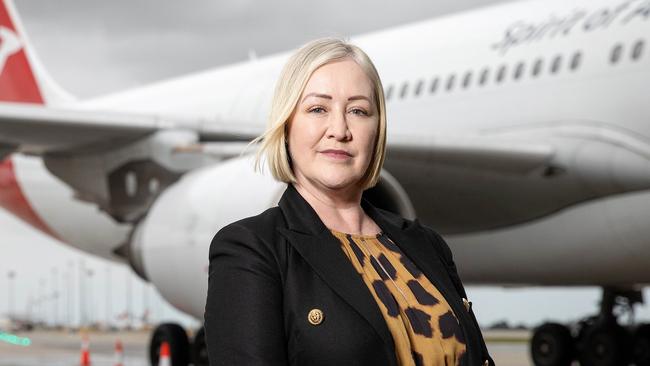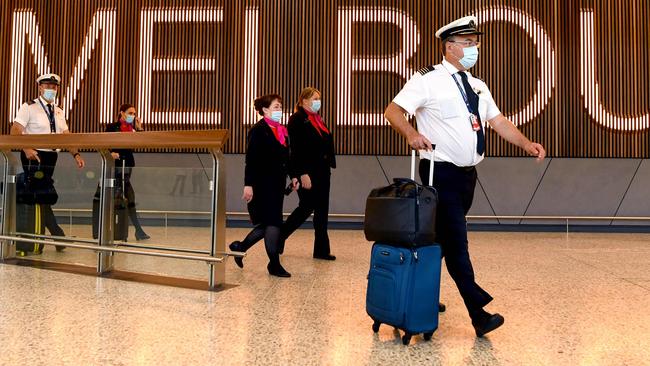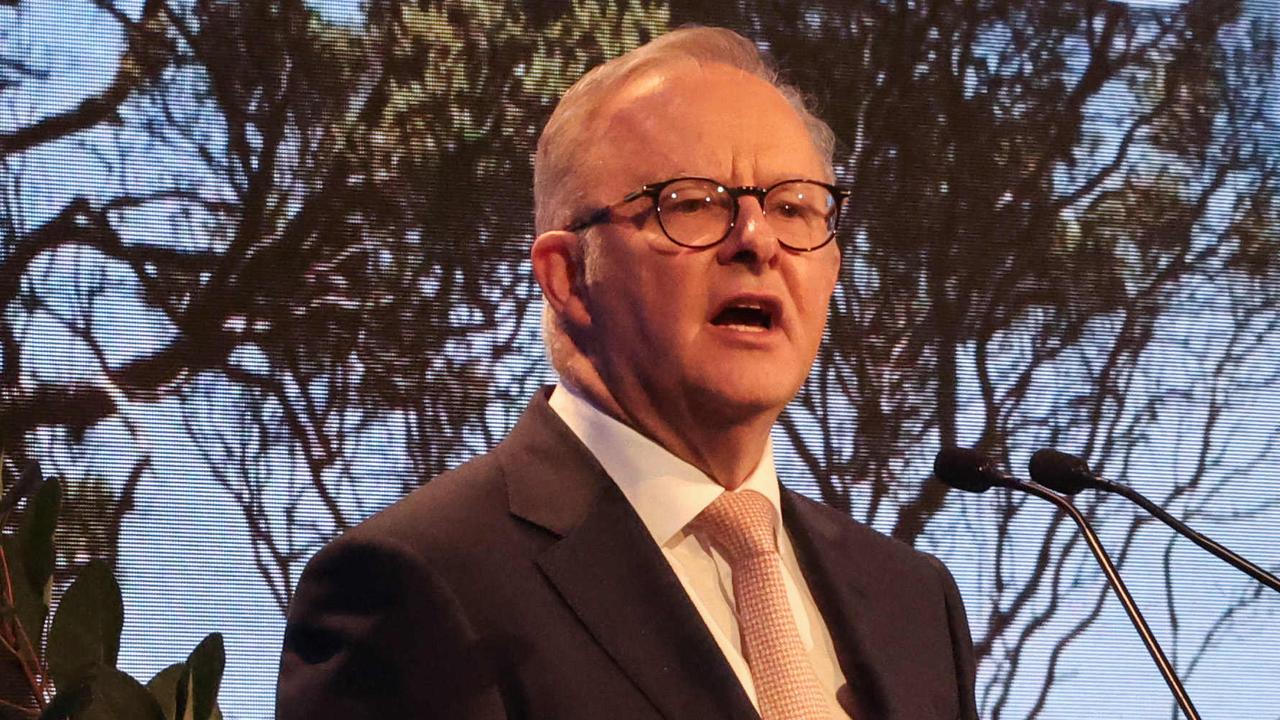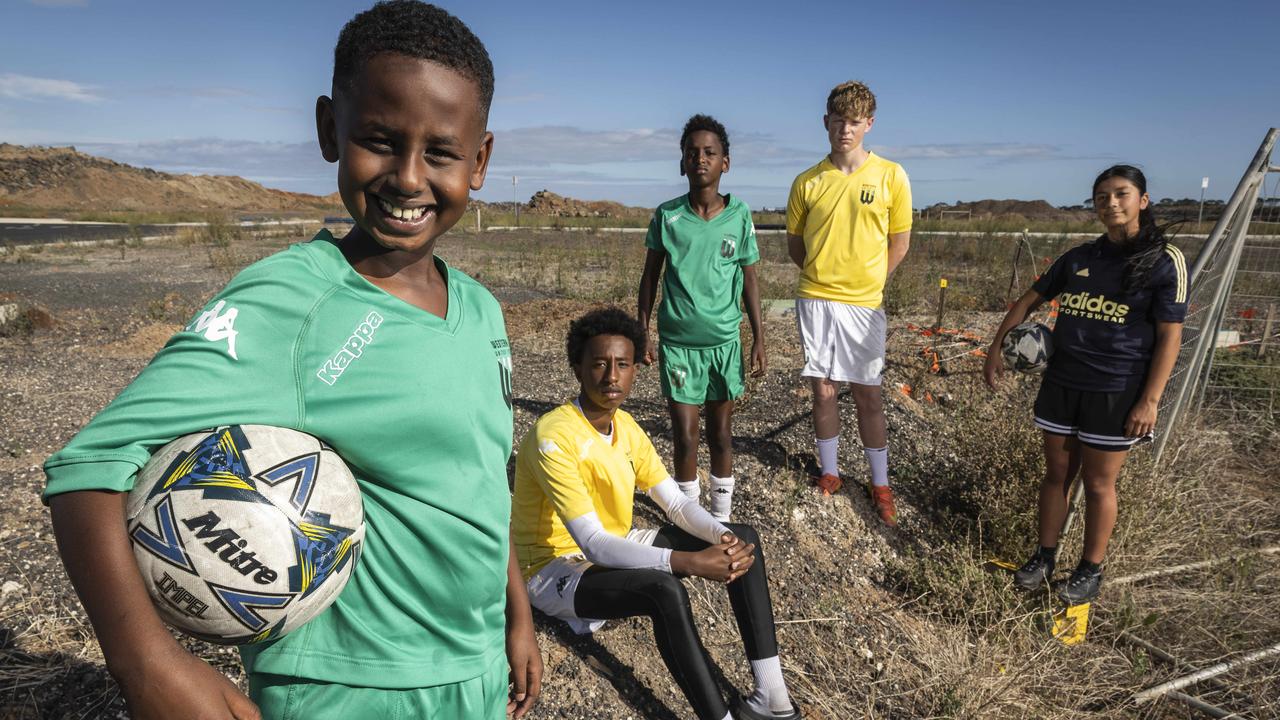How Melbourne Airport aims to soar within a decade
Melbourne Airport aims to more than double its passenger numbers as it recovers from pandemic border closures. Here are the plans for its future.
Future Victoria
Don't miss out on the headlines from Future Victoria. Followed categories will be added to My News.
Melbourne Airport will take almost a decade to fully recover from the pandemic, but wants to more than double its passenger numbers to 100 million as it plans for a third runway.
Melbourne Airport was tipped to record 47 million passengers in the year to June 30, 2020, before the pandemic hit, but instead recorded 27.2 million as state and international borders were closed.
Forecasts now predict it will likely climb back to 34 million passengers by 2026.
Pre-Covid levels won’t be hit until 2029, Melbourne Airport chief of aviation Lorie Argus said.
The airport has a vision for 100 million passengers one day, but is currently expected to reach 76 million about 2042.
“It is really going to take about five to 10 years to rebuild,” she said.
Key to the recovery will be luring back flights and new airlines to replace those lost from financial hardship.
Ms Argus said airlines needed certainty that borders would remain open before they could “fleet up significantly”.
“Because of virtual meetings, corporate travel will look different,” she said.
“But there’s also been a blending of business and leisure which means people may have more opportunity to travel, working remotely at the same time as having a holiday.”
“We’ve had nine leisure routes added to Melbourne within one year, that’s the most growth in new domestic routes we’ve seen since 2012.”

A $1.5bn new third runway, running north to south, will be needed even if travel returns slowly with planning underway and community consultation expected later this year.
If the full proposal is approved, construction could start in 2026 and could take around 10 years until operational.
A fourth runway, which when completed will create the shape of a hashtag at Tullamarine, will then be considered.
But Ms Argus said it was not clear when this would be needed.
“It is anyone’s guess about forecasting future demand and when that will be required,” she said.
”But it definitely has always been in the long-term planning for the airport to have that flexibility.”
Both runways will add new flight paths and noise over large sections of residential Melbourne and the airport has no curfews that limit flights during certain parts of the day.
A state committee is reviewing how to manage added flights over suburbs in Melbourne’s west, with the airport seeking to have say on planning process.
This would allow the airport to argue against development it believed was inappropriate under flight paths in Melbourne’s north and west, such as childcare centres or apartment blocks that would later attract noise complaints.
Authorities have previously argued Tullamarine’s growth was planned decades ahead of time and the current laws do not prevent projects that could jeopardise this long-term strategy.
The airport is not asking for the final decision on planning applications, instead requesting that it be consulted as part of a larger process.
Competition for flights and tourism dollars will be fierce over the next decade, with Sydney to have two airports with rail connections by 2025 – before Victoria has even one.
But Ms Argus backed the city to still be a major attraction across the next few decades and for the airport to continue growing into a travel hub for the globe.

”We have the opportunity to build well into the future, we’ve got a vision of facilitating 100 million passengers per year,” she said.
“We’re just looking forward to rebuilding, with the state, this great city an getting back to being the tourism capital of arts, culture and entertainment that we were.”
Avalon Airport chief executive Justin Giddings said they were already operating Melbourne’s third runway and hoped governments would continue to help the second airport grow.
Mr Giddings said a rail connection to the new Avalon Station could be built affordably, quickly and help to stay competitive with New South Wales before 2025.
He also called for an aviation attraction fund to lure airlines to Victoria and keep international visitors growing.
“They are the big things that we can address and now is the time, airlines have a clean slate to work with and Victoria needs to be out there on the front foot,” Mr Giddings said.
“I do believe we will bounce back a lot quicker … International flights will be hard but an attraction fund divvied up fairly will go a long way.
“All things being equal we will be stronger than we were in 2019 by the middle of next year.
“There’s a big opportunity here as an airport that is also in regional Victoria but just down the road from Melbourne.”
A third major airport for Melbourne could also be a reality by 2050, with the state government currently investigating what land and flight paths are needed southeast of the city.
The project is listed in the city’s Plan Melbourne strategy, which requires authorities to finalise a preferred site close to 2030 if there is still demand for the project.
Koo Wee Rup has been floated as a likely location and is expected the airport could one day be used by a third of the state’s population.


